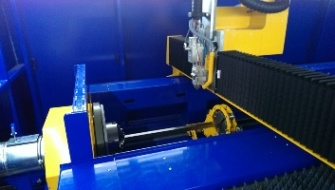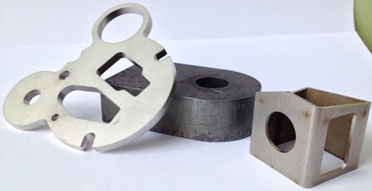Obviously, the main benefit of fiber lasers is savings of up to half of expenses for operation and maintenance of the cutting machine; this advantage dominantly determines the rate of growth and popularity of this technology. Not only that no laser gases are necessary for its operation, also the source itself is greatly effective: nominal power of a 4 kW fiber laser (including a cooler) is about 18 kW, compared to 57 kW for a 4 kW CO2 laser. There are also no maintenance costs associated with the lifetimes of discharge tubes or the turbine in the cooling circuit of laser gases, or the vacuum pump, while these expenses create a significant part of maintenance costs of a CO2 laser.
Unlike the situation just a few years ago, contemporary fiber lasers (4 kW) can cut mild steel up to a thickness of 20 mm, stainless steel to a thickness of 15 mm, aluminium to 15 mm, brass to 8 mm and copper to 6 mm in excellent quality.
Since the product launch in 2010, MicroStep´s fiber laser cutting line MSF has undergone a vivid development. Not only the outer looks have changed significantly but more importantly the performance, the cutting range and features have grown to higher precision and speeds, easier maintenance and a wider offer of additional equipment.
We are currently supplying machines with working areas of 3 x 1.5 m, 4 x 2 m, 6 x 2 m, and 12 x 2.5 or 12 x 3 m, all of which are equipped with an automatic shuttle table and a conveyor for discharging waste from the cutting area of the machine. The machines are equipped with laser sources from the market leader IPG with powers reaching 1 – 5 kW. Optionally, each machine can be supplied with a pipe- and profile cutting zone for materials with outer diameters of up to 500 mm. Depending on the requirement, we supply three different designs of pipe cutting zones with respect to the workload (min/max pipe dimensions, manual or automatic loading of pipes and discharging of cut parts). For easier operation and maintenance (besides integration of latest designs of cutting heads with automatic focus position and focus diameter adjustment), additional default functions were adopted to increase the machine´s performance: automatic plate edge detection and plate measuring via capacitive sensor in the cutting head, automatic nozzle calibration and nozzle cleaning. For optical checking of the state of the laser nozzle, a real-time camera is a part of the nozzle calibration station.

Utilizing physical properties for the benefit: thanks to a 10x shorter beam wavelength, fiber lasers can achieve a smaller beam diameter (i.e. higher energy density) in the focus of the cutting head and thus cut thin materials faster than a CO2. However, the thicker the cut material, the more this fact turns into a disadvantage because of a very thin kerf and the resulting risk of kerf flooding with material when increasing material thickness. It is therefore necessary to have a larger focus diameter for cutting thicker materials, and for the sake of industrial use, the laser cutting head should be able to change the focus diameter automatically (without the intervention of operating staff, e.g. manual lens change). To fulfil the versatile demands of the job shop market, i.e. cutting across the whole thickness range, MicroStep is using HighYAG´s benchmark laser cutting head BIMO-FSC that enables independent adjustment of the focus position and the focus diameter in a fully automatic process. This allows convenient cutting of materials up to 20 mm thickness while using a single diameter fiber. The cutting heads are free from lens change – the only task of the operator is to clean the cover slide.
To ensure excellent gas management in the cutting heads, MSF machines use dedicated gas consoles from the company Hoerbiger equipped with fast piezoelectric valves that enable extremely fast switching of gases during the cutting process and a very precise proportional valve for gas pressure control.
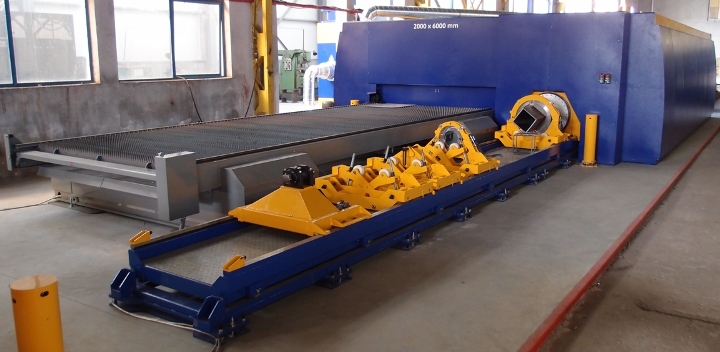
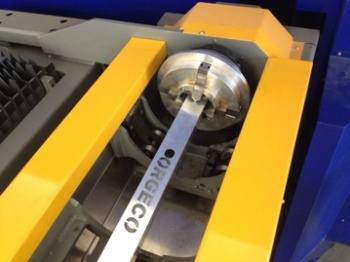
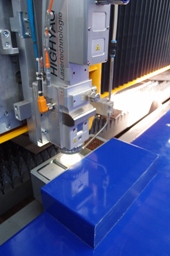
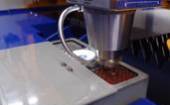
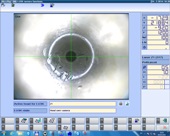
 Utilizing physical properties for the benefit: thanks to a 10x shorter beam wavelength, fiber lasers can achieve a smaller beam diameter (i.e. higher energy density) in the focus of the cutting head and thus cut thin materials faster than a CO2. However, the thicker the cut material, the more this fact turns into a disadvantage because of a very thin kerf and the resulting risk of kerf flooding with material when increasing material thickness. It is therefore necessary to have a larger focus diameter for cutting thicker materials, and for the sake of industrial use, the laser cutting head should be able to change the focus diameter automatically (without the intervention of operating staff, e.g. manual lens change). To fulfil the versatile demands of the job shop market, i.e. cutting across the whole thickness range, MicroStep is using HighYAG´s benchmark laser cutting head BIMO-FSC that enables independent adjustment of the focus position and the focus diameter in a fully automatic process. This allows convenient cutting of materials up to 20 mm thickness while using a single diameter fiber. The cutting heads are free from lens change – the only task of the operator is to clean the cover slide.
Utilizing physical properties for the benefit: thanks to a 10x shorter beam wavelength, fiber lasers can achieve a smaller beam diameter (i.e. higher energy density) in the focus of the cutting head and thus cut thin materials faster than a CO2. However, the thicker the cut material, the more this fact turns into a disadvantage because of a very thin kerf and the resulting risk of kerf flooding with material when increasing material thickness. It is therefore necessary to have a larger focus diameter for cutting thicker materials, and for the sake of industrial use, the laser cutting head should be able to change the focus diameter automatically (without the intervention of operating staff, e.g. manual lens change). To fulfil the versatile demands of the job shop market, i.e. cutting across the whole thickness range, MicroStep is using HighYAG´s benchmark laser cutting head BIMO-FSC that enables independent adjustment of the focus position and the focus diameter in a fully automatic process. This allows convenient cutting of materials up to 20 mm thickness while using a single diameter fiber. The cutting heads are free from lens change – the only task of the operator is to clean the cover slide.